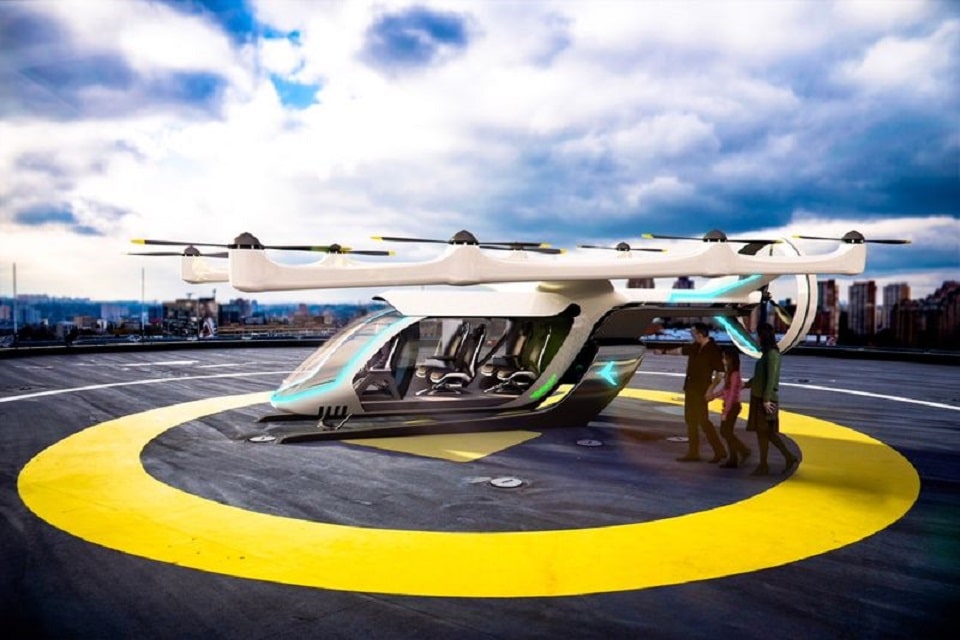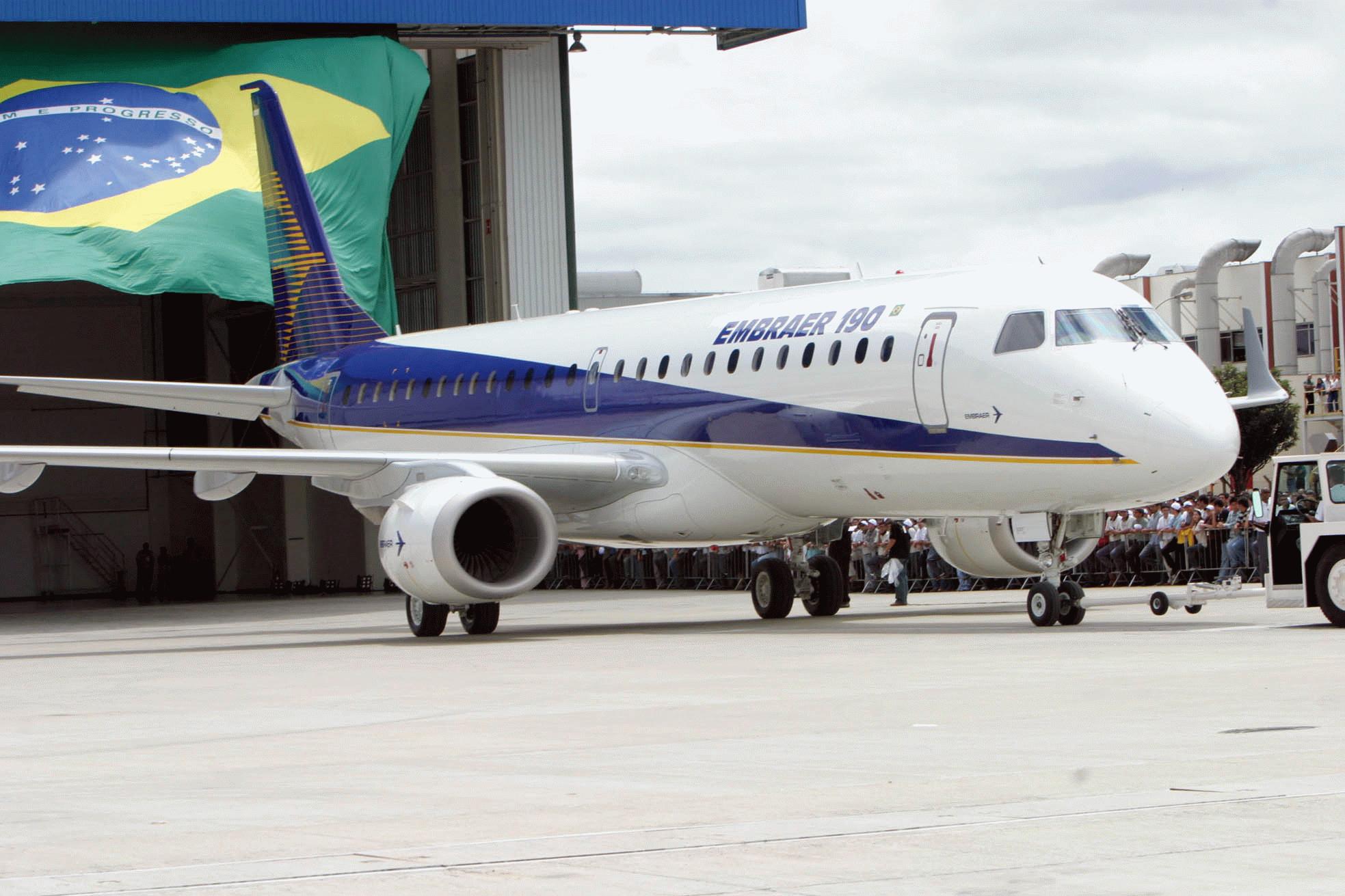Aerospace
Embraer Projects Demand for 1,020 New Deliveries in 70 to 130-Seat Segment in China

Beijing, China, September 16, 2015 – During the China 2015 Aviation Expo taking place at the National Convention Center, Embraer Commercial Aviation released its 2015-2034 Market Outlook for the Chinese market, which presents delivery projections of new aircraft over the next 20 years.
China’s TP500 freight drone makes its maiden flight.(Opens in a new browser tab)
The Company forecasts that 1,020 new jet aircraft in the 70 to 130-seat segment will be delivered in China by 2034. Embraer projects worldwide deliveries of 6,350 jets, in the 70 to 130-seat segment. The value of these deliveries, at list prices, will reach an estimated US$300 billion.


Embraer Commercial Aviation has achieved an 80% share of the regional aviation market in China. Currently, Embraer’s ERJ145 and E190 are serving over 120 airports in more than 400 markets. As of June 30, Embraer had logged 167 firm orders for commercial jets from customers in China, of which 130 have been delivered.
Paulo Cesar Silva, President & CEO, Embraer Commercial Aviation, said: “The aviation industry in China will continue to be robust in the foreseeable future. We believe China’s aviation industry will keep its momentum during the next 20 years and become the largest single-country market in the world.”
China’s economy will remain strong, with a projected annual growth rate of 5.6%. This is one of the drivers that will lead to a 7% annual growth for air travel in China over the next 20 years, and become the highest in the world. “As a world leader in this segment, Embraer is ready to embrace this growth momentum and continue to bridge the current travel gap in the regional market in China,” said Guan Dongyuan, Senior Vice President of Embraer and President of Embraer China.
The report points out that several favorable policies by the central government have had a stimulating effect on the industry: The “One Belt, One Road” initiatives, for instance, a mega-scale blueprint that focuses on the connectivity between countries and regions by all modes of transportation, underscore the importance of air transportation and encourage more regional airlines to launch new routes and improve local air transportation.
The Chinese aviation industry has been reaping the benefits of the central government’s reforms. China’s current Five-Year Plan, under CAAC coordination, includes the construction of 70 new airports and feasibility studies for an additional 28, highlighting the importance of air transportation. The CAAC is also encouraging the introduction of regional aircraft by offering incentives of up to RMB 1 billion per year to the regional aviation industry.
In this context, air transport development will be uneven across the country. Access to air travel in second and third-tier cities will grow twice as fast as in major cities, and the central and western provinces, where there are sufficient time slots and incentives from local governments, will lead the growth in the next two decades. Regulations for new entrants are being relaxed and this has led to a surge in new private airlines. In light of the development of Western and Central China, start-up airlines will exploit the opportunity to operate from small bases, promoting efficiency and profitability throughout the country.
Embraer is also witnessing a more pragmatic trend among airlines, which are changing their metrics of success from market share to shareholder value, in the new landscape. Right-sized aircraft can generate higher revenue and profit per seat, and bring a better return for investors. Embraer E-Jets and E-Jets E2 offer a perfect solution, as they usually command higher average yield. The marginal cost of flying an extra seat is often higher than the lower fare it generates, as larger aircraft introduce surplus capacity that is often sold at widely varying discounts.
“The government’s focus on a new stage of development, combined with the mindset shift to shareholder return in the Chinese airline industry, unveils huge opportunities for regional aviation, which generates enormous demands for jets in the 70 to 130-seat aircraft,” concludes Dongyuan.
About Embraer Commercial Aviation
Embraer is the world’s leading manufacturer of commercial jets that seat up to 130 passengers. Nearly 900 aircraft from the 37, 44, and 50-seat ERJ 145 family of regional jets have been delivered to airlines since their introduction in 1996. The E-Jet family includes four larger aircraft that have between 70 and 130 seats. The E170, E175, E190, and E195 set the standard in their category with their advanced engineering, high degree of efficiency, spacious, ergonomic cabins with two-by-two seating, and attractive operating economics. Since E-Jets entered revenue service in 2004, Embraer has received over 1,650 firm orders for this aircraft family. More than 1,100 have been delivered.

Aerospace
Boeing Transfers Rocket Stage to NASA, Paving Way for Human Moon Mission

Boeing has achieved a significant milestone by providing NASA with the second core stage of the Space Launch System (SLS) rocket.
This crucial component, crafted at NASA’s Michoud Assembly Facility (MAF), is set to propel the Artemis II crew into lunar orbit, marking humanity’s return to deep space after a 50-year hiatus.
The monumental Boeing-built rocket stage, the largest element of the Artemis II mission, will embark on a journey aboard the Pegasus barge, traveling 900 miles to NASA’s Kennedy Space Center.
Comparison of two legendary aircraft B777x vs B747 aircraft:Click here
Upon arrival, it will be meticulously integrated with other essential Artemis II components, including the upper stage, solid rocket boosters, and NASA’s Orion spacecraft within the iconic Vehicle Assembly Building. This intricate integration process is a vital step toward the eagerly anticipated Artemis II launch, slated for 2025.
“Boeing-built products helped land humankind on the moon in 1969, and we’re proud to continue that legacy through the Artemis generation,” remarked Dave Dutcher, vice president and program manager for Boeing’s SLS program. “Together, with NASA and our industry partners and suppliers, we are building the world’s most capable rocket and paving the way to deep space through America’s rocket factory in New Orleans.”
NASA, Lockheed Martin Reveal X-59 Quiet Supersonic Aircraft:Click here
The delivery of Core Stage 2 marks a significant achievement in the evolution of the SLS rocket. Towering over 200 feet and powered by four RS-25 engines, this core stage, coupled with two solid-fueled booster rockets, will generate a staggering 8.8 million pounds of thrust. This immense power is crucial to launching Artemis II and future missions into the vast expanse of space.
The SLS rocket stands unparalleled in its capability to transport both crew and substantial cargo to the moon and beyond in a single launch. Its extraordinary capacity will facilitate the delivery of human-rated spacecraft, habitats, and scientific missions to destinations including the moon and Mars, ushering in a new era of space exploration.
-

 Travel1 week ago
Travel1 week agoAir India to Expand US Operations with Three New Routes After a Decade
-

 Travel2 weeks ago
Travel2 weeks agoWhy We Should Avoid These Stamps in a Passport
-

 Airlines1 month ago
Airlines1 month agoInvestigations Reveal Fake Chinese Titanium in Boeing and Airbus Jets
-

 Tech4 weeks ago
Tech4 weeks agoChina’s CATL Plans 1,800-Mile Electric Plane Launch by 2027
-

 Airport3 days ago
Airport3 days agoTop 10 Largest Airports in the World by Size
-

 Aerospace4 weeks ago
Aerospace4 weeks agoChina’s Fighter Jets Turn Wings into Autonomous Drones
-

 Airlines4 days ago
Airlines4 days agoAir India Rolls Out A350s for Delhi-New York JFK and Newark Routes
-

 Defence3 weeks ago
Defence3 weeks agoBoeing Enhances Chinook with New Engines and Block II Upgrades at $96 Million







